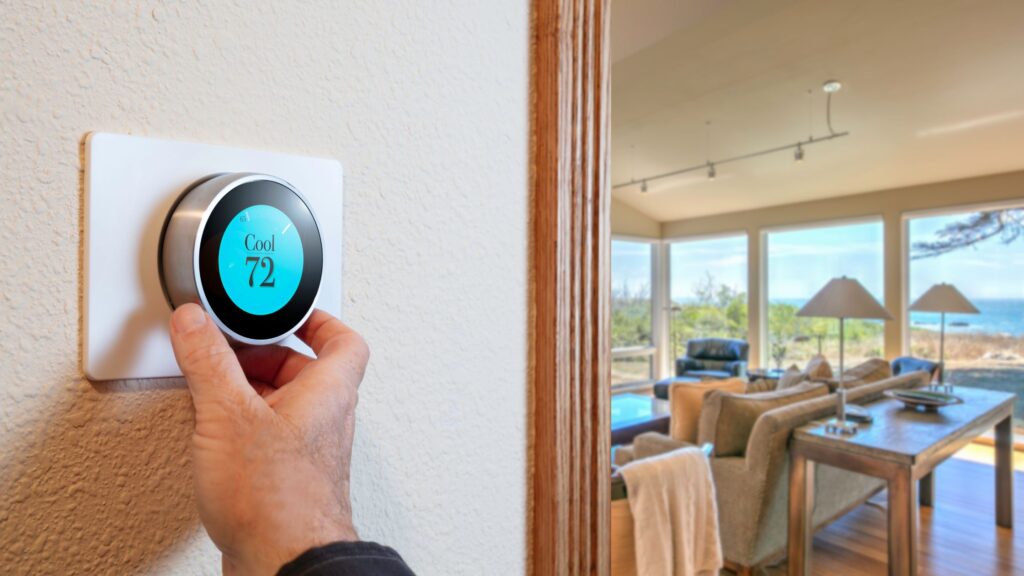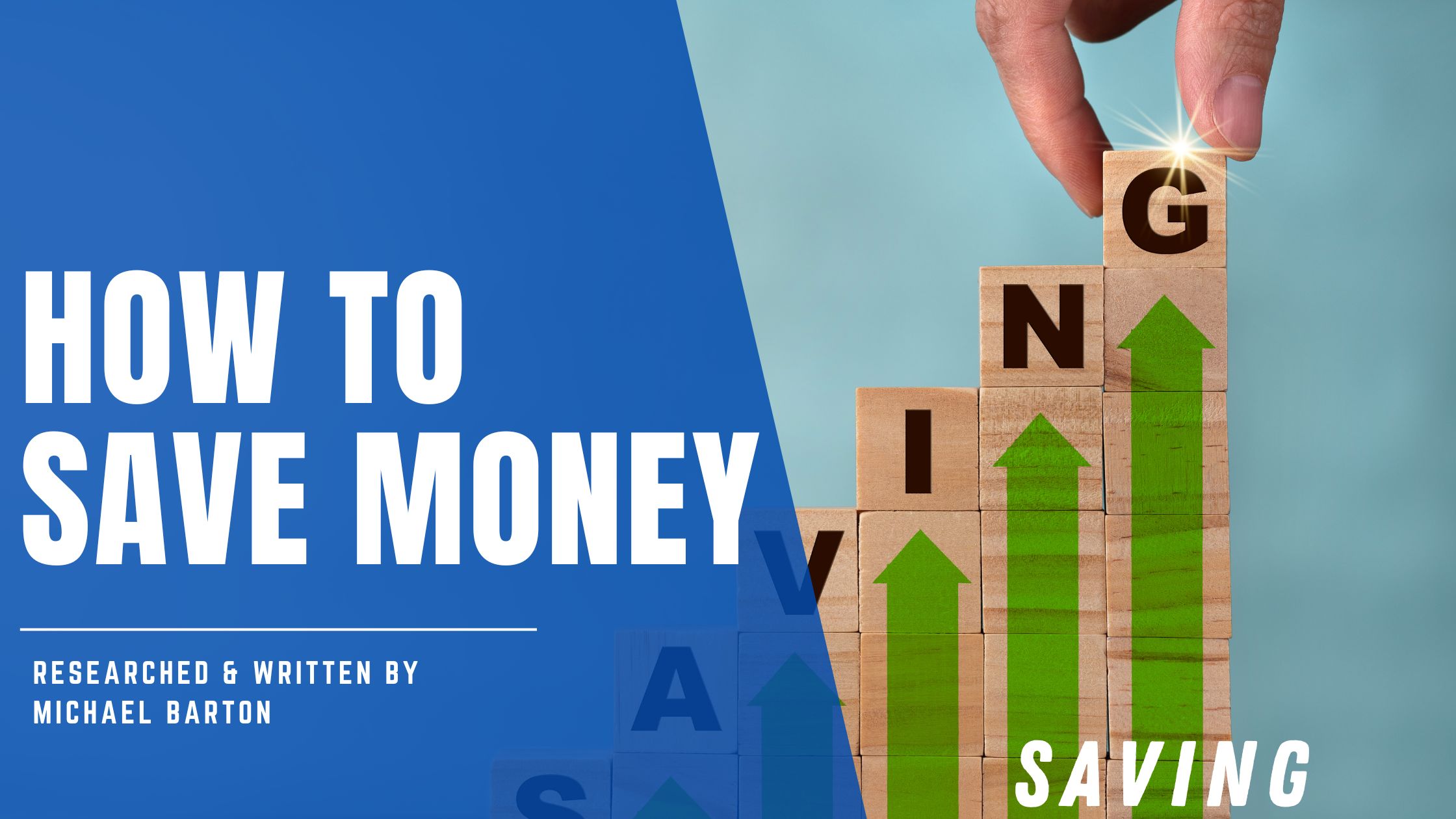Knowing how to save money sounds simple, but it can be very challenging to master. Here, Michael Barton lets you in on some practical strategies to help you take control of your finances…
One of the hardest things to do is save money. Often because you don’t think you have enough money to save. Usually because you’ve never been shown how to save money creatively. Always because you haven’t developed a savings habit.

The first step to saving is to want to save. I know you’re in that mindset right now. You wouldn’t be reading this article if you weren’t. The question is, what now?
You may have tried to put money aside regularly and failed. Boring, right? So boring that, on a whim, you spent the savings you accumulated. You can’t even remember what you did with the money.
Here’s the conundrum most people have:
- You want to save, but you’re not sure that you have any spare cash to do so
- You don’t know what’s the best way to save
Let’s tackle this double challenge: in seven steps you could transform your finances.
The Key Takeaways
1. Be disciplined and get into good spending habits to save money.
2. Be conscious about your spending – this is crucial to saving money!
3. Use every trick available to save money when you spend, and the budget to save.
What’s Really Stopping You from Saving Money?
A problem that I had before I became a habitual saver was not having spare cash to spend. What I earned, I spent.
What I had to learn is that saving money is as much about budgeting and spending wisely as it is about the mechanism of saving. I had to change my relationship with my budget and with how I spent money to save money and build a savings fund.
What’s the Best Way to Save for You?
Here’s the next piece of the puzzle: what turns out to be a great way to save for me might not be the best way for you to save money.
Some people are quite happy to stash their cash in a ‘hidden’ savings account. You might be more motivated to save if you can see your cash pile growing.
Others don’t want the hassle of sitting down, counting their coins, and putting money into a piggy bank each week. You might need that as a savings routine, to reinforce that you are doing something positive.
We’re all unique. Fortunately, there are many ways to save – you just need to find the one that ignites your savings psyche.
Let’s get started.
Tips to Spend Less
Do you really have enough cash to save? I’m going to share my number one tip for budgeting a little later in this article. First, let’s look at how you transform your spending habits to embed a saving mindset.
Here’s what my shopping experiences have taught me over the years:

Plan your meals for the week
A meal plan tells you exactly what food to buy. This will reduce waste drastically. As a bonus, you’ll never stand in front of the fridge pondering what to cook again. That’s a load of stress removed and time freed.
Make a shopping list and stick to it
My wife and I used to go shopping and ‘guess’ what we needed to buy. Consequently, we’d get to the checkout with a trolley full of stuff we didn’t need. Impulse buys.
One Saturday, I went shopping on my own. With a list. The shopping bill was 20% lower than usual. Next to no waste during the week, either.
Try out different brands – especially ‘own brands’
Buying own-brand goods or different brand products can save a small fortune. An example as I’m writing this is Heinz v Tesco tomato sauces:
- Heinz Top-Down Tomato Ketchup 910g is £4.25
- Tesco Tomato Ketchup 890g is £1.35
If you go through a bottle each week, you could cut your grocery spending by around £150 per year. Now imagine how much you could reduce your shopping bill if you repeated this exercise across your whole shopping list!
My niece and her family featured on the TV programme ‘Eat Shop Save’. It transformed how they shopped, how they cooked and ate, and their lifestyle. It also transformed their bank balance. During the eight-week challenge, they saved £1,000. That’s £125 per week. £6,500 over a year.
Compare price per kg/litre
Do you buy three individual bottles of washing-up liquid at £2 each, or a pack of three for £5.50? A no-brainer, right? Except that the individual bottles are 1-litre bottles and the pack of three are 750cl. Buy that pack of three, and your equivalent price is £2.44 per litre. You just got caught in a common supermarket trap.
Always compare the per kg/per litre price when shopping for the best value.
Buy ‘Yellow Labels’
Buying yellow label food is another way to save huge amounts when grocery shopping. The discounts can be enormous.
Some savvy shoppers know exactly when to ‘hit’ their local supermarkets to get the best and most yellow label deals. I’ve seen the most dedicated yellow label shoppers take away an overloaded trolley of meat for less than a tenner!
Buy in bulk
It could be worth investing some of the money you have saved on your shopping bill to buy some items in bulk (non-perishables, like toilet rolls and domestic cleaning items are my favourites, or foodstuffs that you can fit in your freezer). Over time, this could save you even more money – though it’s a slow-burn saving.
Shop around
This is something that my wife is really good at. She knows exactly which supermarkets are the cheapest in different goods. One for meat. Another for fish. Another for fruit and vegetables. She’s so good at this, that she can tell me which supermarket is cheapest for apples, or haddock, or cheddar cheese.
The bottom line? Get to know your supermarkets. You’ll save plenty when you shop a circuit instead of visiting only one store.
Stop those impulse buys
More than half of us make an impulse purchase every time we go shopping. You could be spending hundreds of pounds each month on items you want but don’t need. A book or video game. Clothes and shoes. Bags. Sweets, sandwiches, and cakes.
How do you stop this frivolous waste of money? Here are four tips:
- Make a shopping list and stick to it
I’ve covered this above, but it’s so important it’s worth repeating.
- Wait a day before you buy it
You’ve fallen in love with that pair of shoes. Do you really need them? Take a breath and walk away. Tomorrow, when you’re at home, ask yourself if you really need those shoes.
- Never bust through your budget
You’re shopping for clothes. Give yourself a budget, and don’t go over this. If this is difficult for you, take cash and leave your cards at home.
- Give yourself an impulse buy budget
What’s life if we can’t have a little fun? Aren’t impulse buys a part of this?
When you get paid, set yourself an impulse buy budget. Take the cash out of your bank, and put it in a separate sleeve in your purse or wallet. Whenever you feel the urge to buy something on impulse, use that cash. When it’s gone, it’s gone.
Have your shopping lunch break at home
Shopping is thirsty and hungry work. You’ll be tempted to have a coffee or even lunch in town before you bring your shopping home. What’s the bill for a family of four? £15 for coffee and shakes? £40 or £50 for lunch?
If you go straight home and have a treat after you’ve put away all your shopping… I’ll let you work out how much you could save over a year.
Tips to Spend Wisely
Spending less and spending wisely are strongly related. Making a list and sticking to it, setting a budget, and buying for value are all ways to spend less and spend wisely.
Here are a few more ways you can be wiser about how (and how much) you spend.
Reduce your utility bills
Rocketing utility prices, especially gas and electric, have made big news in recent years. The financial help the government has given has hardly scratched the surface – but you should still ensure you are claiming what you can.
On top of this, here are five quick fixes to help you reduce your energy bills:
- Unplug your standby appliances at night
According to British Gas, you could save £110 a year by unplugging your TV, laptop, mobile phone and other mobile devices when fully charged, set-top boxes like Freeview and Sky+, and games consoles.

- Take showers, not baths
Take a shower every day instead of a bath, and you could cut your bathing costs by as much as a third.
- Take your thermostats down a notch or two
Heat your body, not the house – put on a jumper.
According to the experts, reducing the thermostat setting on central heating by just a degree or two could save as much as 10% on your heating bill. For the average household, this could reduce your bill by around £200 a year.
Reducing the thermostat setting on a water boiler can save around £50 per year.
- Wash on lower temperatures and faster cycles
Modern washing machines are designed to be efficient. You don’t need to do your clothes washing on the highest heat. By using lower temperatures, you could make additional savings of £200 to £300 per year.
- Use high-energy-consuming appliances frugally
Do you fill the kettle before boiling, and then pour only a single cup of tea?
Do you start the ironing, receive a phone call, and leave the iron on while chatting?
Kettles and irons are two household appliances that literally eat your electricity. Only fill the kettle with the water you need. Use your iron consciously.
Review your subscriptions
According to NatWest, the average adult in the UK spends almost £500 on regular payments every month. Of this, around 10% is on unused direct debits. These include:
- Gym memberships – when was the last time you went to the gym?
- Streaming subscriptions – do you really make the most out of your Netflix, Amazon Prime, and Spotify subscriptions?
- Unused insurance policies – they seemed a good idea at the time, didn’t they?
My advice is to regularly review your subscriptions and memberships. Cancel the ones you don’t need. Negotiate on the ones you do use. You’ll be surprised how much Sky might knock off your monthly subscription if they think you are going to leave.
If you can cancel or reduce your monthly subscriptions by £50, that’s £600 a year. Another £36,000 over the average adult lifetime.
Cut down on the expense of eating out
Who doesn’t love eating out? No cooking. No washing up. No tidying away. It all comes at a cost, though. Eating out is not cheap. The best way to save money on eating out is not to eat out! Other than this, here are some tips to cut how much you’re spending on eating out:
- Limit your dining trips to once or twice per month, or for special occasions
- Use vouchers or restaurant deals
- Eat out on nights when local restaurants have meal deals
- Share a starter between two
- Skip dessert and coffees
Keep the kids entertained for free

You don’t have to spend hundreds of pounds to keep the kids entertained. There is plenty that you can do cheaply. A day in the countryside or at the beach, for example. Follow a nature trail, or create your own. Have an arts and crafts day indoors. Plan a barbecue in a local park.
Search on your local authority’s website for free events in your area. Use your Tesco Clubcard points to get cheaper deals on family days out. Before you book any tickets to anywhere, search the internet for special deals – Groupon can be a source of very juicy discounts.
Go direct when booking accommodation
The internet has made booking accommodation easy. However, all the ‘cheap deals’, and bonuses you build for booking through online sites, does not mean you are always getting the best deal. You could save a huge amount by booking direct. (Last year, I saved more than £600 on a single one-week luxury booking!)
Plan to buy during the sales
If you are planning to make a major purchase – for example, furniture or electrical goods ─ plan your spending for the sales (don’t you just wish you could delay Christmas for a couple of weeks?).
Break your addiction to shopping online
The internet has made shopping far easier and, often, cheaper. This convenience and our love of a bargain comes at a hefty price, though. It’s addictive. We buy things that we don’t really need. There are a few ways to break this habit, including:
- Make it harder for yourself to make online purchases by not adding your credit card details to the merchant’s database.
- Limit the day and time you allow yourself to shop online: half an hour on a Saturday morning at 10am, for example.
- Use the BlockSite app to block shopping websites.
- Always compare in-store prices to online prices before buying.
Setting (and Sticking To) a Budget to Save
Budgeting is also a key part of saving money. It focuses your mind on spending less and more wisely, and helps develop good spending habits. Here’s how to create a budget to save more:
Step #1: Track your spending for a month
It’s crucial to understand your starting point. In a notebook or on a spreadsheet, note down every penny you spend, and categorise your spending (entertainment, food shopping, hobbies, travel, fuel, eating out, etc.). Ask for receipts, and keep all of them.
At the beginning and end of the month, take water, gas, and electricity meter readings.
Take your spending notebook with you everywhere you go, and write down every penny of spending.
Step #2: Work out what you could have saved
More hard work, but eye-opening:
- Put all the receipts you have collected in different piles: grocery shopping; eating out; entertainment; etc.
- Work through each pile and ask of every receipt, did I really need to spend this? Put all the receipts where the answer is ‘no’ into a separate pile. Add it all up at the end.
- Work through your grocery shopping receipts, and compare the prices you have paid with prices shown online for non-branded products. As you do this, make a list of those non-branded products and the saving you could make.
- Total the potential savings on your grocery shopping over the month, and make a list of all the non-branded products you will now exchange for the branded products.
Now, you are ready to move to the next stage.
Step #3: Be disciplined about your spending in month two
As soon as month two kicks in, become more disciplined about your spending:

- Make meal plans, and make a shopping list (including the money-saving non-branded items you have identified from step 2).
- When shopping, only buy what is on your list. Remember to look out for the yellow label items.
- Think about every purchase – do you really need it, or do you just ‘want’ it?
- Unplug standby appliances at night.
- Turn down your thermostat a couple of degrees.
- Take showers instead of baths.
- Run appliances like washing machines frugally – lower heat settings and when electricity is cheapest.
- Do no shopping online.
- Think of ways that you can keep you and your family entertained for less, or for free – and spend quality time together.
At the end of the month, take utility meter readings.
Step #4: Contrast and compare your spending
Now for the fun part! This is where you see how much you could save:
- Compare your categorised spending from month one to month two.
- Write down those differences in a list.
- Add up your savings.
It’s a little harder to work out how much you could save on your utility bills. Here’s the easy way:
Compare electricity use between your meter readings. For example, month one 250 kWh and month two 225 kWh. A reduction of 25 kWh, or 10%. You have saved 10% of your monthly bill – whatever that happens to be. Do the same exercise for your water and gas bills.
Add up the savings you have made. Now multiply this number by 12. That’s how much your effort to reduce your spending has made.
The first time I did this, I was astounded to find the difference that being conscious about what I was spending had made:
- I was treating myself to far fewer ‘Costa’ coffees
- I took sandwiches to work instead of buying my lunch out
- I walked a little more instead of driving everywhere
- I was more thoughtful about family days out
Most surprisingly, I had spent more than £400 less during the month. Almost £5,000 a year.
My new spending mentality was getting easier every day, too.
Step #5: Turn your budget upside down
Most of us do budgeting wrong. We figure out what our expenses are and deduct these from our pay. What we are left with becomes a spending target – it’s what we allow ourselves to spend each month.
Now that you have discovered what you could save each month, the first item on your budget should be ‘saving’. Then deduct your outgoings. What remains is what you can spend.
Step #6: Continue to track your spending
You can’t manage what you don’t measure!
Don’t take your eye off the ball. Continue to check your spending, focus on avoiding impulse spending, and carry on with the good spending habits you’ve developed.
Step 7: Put your saving on autopilot
Set up a savings account, and transfer your savings to it on the day you get paid. For an extra boost to your savings, set up a ‘roundup’ facility, too. Whenever you use your card to pay for anything, the bill will be rounded to the next pound, and the difference will be added to a savings account.
Last But Not Least – Never Run Out of Money Again!
Putting even a few of the tips in this article will make a big difference. They are not the only tactics, either. There are hundreds of ways to save money. When you’ve found what works best for you, be disciplined, stick to good habits, and set your savings goals – and save first, spend later.

I’ve saved one of my best tips for last. I always think about what I am spending in terms of what it really costs me ─ time. Here’s what I mean:
Let’s say that I’m planning to spend a day visiting a National Trust property. First, I calculate how much it will cost me. The petrol, the entrance price, lunch, and so on. If I go ahead, I figure the day out will cost me £210, and it’s going to be an excursion that lasts seven hours. The question I ask myself is:
How much per hour will this cost me, and how many hours of work will I have to do to cover that cost?
In this example, It’s going to cost £30 an hour. If my job pays me, say, £20 an hour, this day out is equivalent to 10-and-a-half hours of work. Can I justify this? Can I make this time up? Will I get more value out of it than the cost of doing it? Am I willing to sacrifice something else to do this?
The bottom line is if you can always do things that you enjoy and that cost less per hour than you can earn, then you should never run out of money – especially if you have budgeted to save money before spending it.

